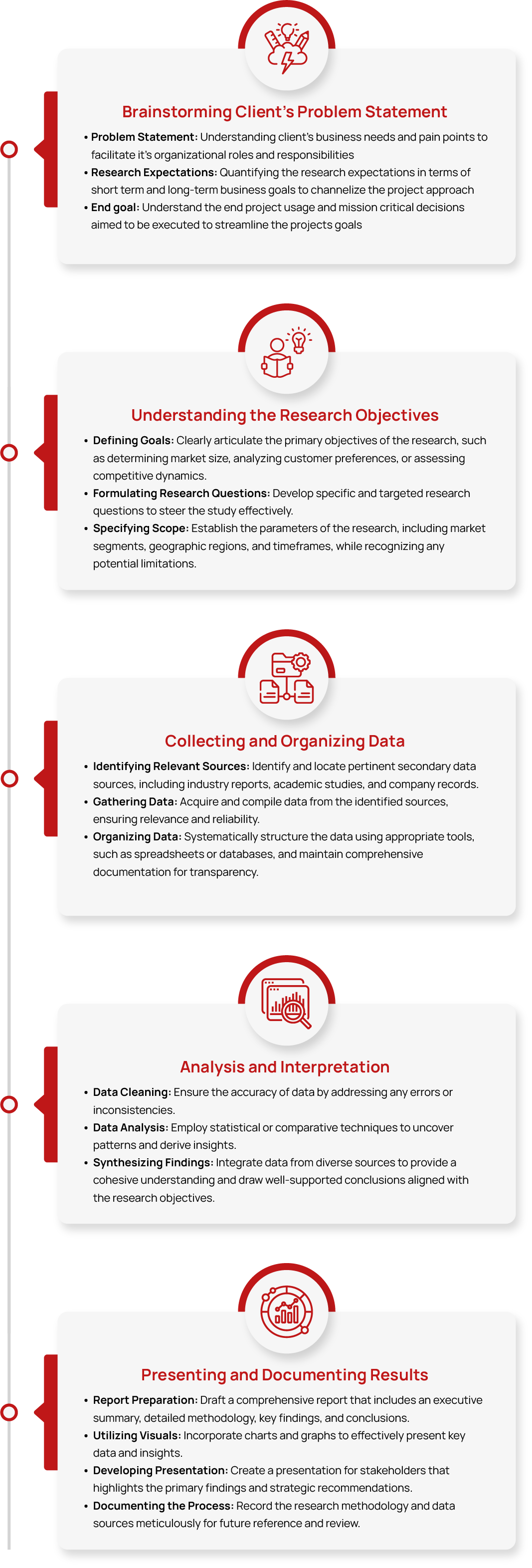Global System Integration Market Size, Share, Growth and Trend Analysis Report, 2032
- Summary
- Market Landscape
- Methodology
- Table of Contents
Global System Integration Market Size, Share & Growth and Trend Analysis Report, By Solution (Hardware Integration, Software Integration, and Consulting), By Enterprise Size (Large Enterprises and Small & Medium Enterprises), By Industry Vertical (IT & Telecom, Defense & Security, BFSI, Oil & Gas, Healthcare, Transportation, Retail, and Others) and Regional Forecasts (Asia Pacific, Europe, North America, Latin America and Middle East & Africa), 2024 – 2032
The system integration market involves the process of linking various subsystems and ensuring they work together as a unified system. This market encompasses services such as designing, configuring, implementing, and managing complex IT infrastructures, including hardware, software, and networks.
System integration is crucial for businesses looking to streamline operations, improve efficiency, and enhance performance. The market serves industries like manufacturing, healthcare, retail, and finance, providing tailored solutions for diverse needs. Key drivers include the rise of digital transformation, cloud computing, and the increasing adoption of IoT and automation technologies.
Integration services help organizations optimize workflows and improve interoperability between different platforms. With the growing complexity of enterprise systems, the demand for skilled system integrators is steadily increasing. The market is expected to continue expanding as businesses seek more efficient, scalable, and secure integrated solutions.
The global system integration market size is expected to grow from USD XX billion in 2024 to USD XX billion by 2032, reflecting a CAGR of approximately 13% during the forecast period (2025-2032).
Industry Trends
System integration involves the seamless integration of hardware, software, and consulting services to ensure smooth interoperability within organizational systems, enabling businesses to optimize their operations and enhance efficiency.
The global system integration market is experiencing substantial growth, fueled by the increasing demand for advanced connectivity, digital transformation, and the modernization of IT infrastructure across various industries such as healthcare, finance, and manufacturing.
Despite its growth, the market faces significant challenges, including the complexities of integrating legacy systems with emerging technologies, which often leads to compatibility issues. Additionally, there is a notable shortage of skilled professionals capable of managing and operating sophisticated technologies and equipment, further hindering market progress.
The reliance on standardized network infrastructure is crucial for seamless integration, yet the lack of such standardized systems in many organizations has delayed the widespread demand for system integration services. Furthermore, as companies move towards cloud computing, AI systems integration, and IoT solutions, the need for adaptable, scalable, and secure integration services becomes even more critical, highlighting both opportunities and challenges within the market.
As businesses continue to focus on digital transformation, the demand for reliable and efficient system integration is expected to rise, shaping the future of IT infrastructure management.
Industry Expert’s Opinion
- Navid Radnia, Director of Corporate PMO, E Tech Group
“The biggest trend for system integrators in the coming years is the increasing adoption of AI-driven automation and smart manufacturing solutions. As industries move toward Industry 4.0, the demand for integrating AI, IoT and data analytics into traditional systems is rapidly growing.”
- Thea Sander, Technical Marketing Lead, Vertech
“The biggest trend will be adopting development standards defined by SaaS (software-as-a-service) companies like Figma, Adobe, Google, Uber and other. This is your agile scrum, CI/CD pipeline, automated testing, separate development and test environments, etc. But within that, the big theme we’re seeing is user experience (UX) research [often integrated into the human-machine interface, HMI].”
- Joshua Payne, Controls and Automation Division Leader, Hargrove Controls & Automation
“There seems to be a push in the industry to embrace artificial intelligence, digitalization and Industry 4.0, but you need access to data to be able to do any of those. A lot of people don’t have access to the data in the ways they need. There are still a lot of islands of automation where devices are not interconnected, and the data is not accessible. So, executing the right projects to enable the data collection, installing the right OT networks, and ensuring they are secure will enable you to access the data and interpret it in meaningful ways.”
TT Consultants’ Perspective
The system integration market is poised for significant growth, driven by the rapid adoption of advanced technologies such as 5G, cloud computing, and AI systems integration across various industries.
Strategic collaborations, innovative product launches, and acquisitions by top system integration companies like Schneider Electric, Cisco, Oracle, and IBM highlight the increasing demand for integrated solutions that enhance operational efficiency and scalability.
As organizations transition to hybrid and multi-cloud environments, the focus on seamless connectivity and optimized IT infrastructure will further propel market expansion. This dynamic landscape underscores the market's critical role in enabling digital transformation and driving value for businesses worldwide.
Market Segmentation
1. By Solution (Hardware Integration, Software Integration, and Consulting)
The hardware integration segment holds a significant share of the global system integration market at nearby USD XX Bn in 2024, driven by increasing adoption of advanced hardware solutions in industries such as IT and telecom, defense, and healthcare. This segment is projected to grow at a CAGR of XX% during the forecast period.
On the other hand, software integration is the fastest-growing solution segment, fueled by the widespread adoption of cloud-based and AI-driven applications. It is anticipated to register a CAGR of XX%, underscoring the increasing reliance on robust software platforms for enhanced connectivity.
2. By Enterprise Size (Large Enterprises and Small & Medium Enterprises)
Large enterprises dominate the global system integration market, accounting for a share of USD XX Bn in 2024 due to their substantial IT budgets and the need for scalable integration solutions. This segment is forecasted to grow at a CAGR of XX%.
Meanwhile, SMEs are emerging as a key growth driver, with increasing awareness and adoption of cost-effective integration solutions. The SME segment is anticipated to witness a CAGR of XX%, reflecting their growing contribution to market expansion.
3. By End-User (Defence, Energy & Power, Medical, Transportation, Industrial and Others)
The IT and telecom sector remains a major contributor to the system integration market, expected to grow at a CAGR of XX% and a market share of USD XX Bn in 2024, driven by the ongoing digital transformation and demand for robust IT infrastructure.
The healthcare segment is expected to grow at a CAGR of XX%, driven by the adoption of electronic health records, telemedicine platforms, and integrated patient care systems.
4. By Region (North America, Europe, Asia Pacific, Latin America, Middle East Africa)
North America holds the largest market share in the global system integration market with USD XX Bn revenue for 2024 and a projected CAGR of XX%, driven by the presence of major technology providers and high adoption rates of advanced system integration solutions.
However, Asia Pacific is the fastest-growing region, anticipated to grow at a CAGR of XX%, due to rapid industrialization, expanding IT infrastructure, and increasing investments in technology-driven solutions across emerging economies.
Europe is expected to witness a CAGR of XX%, supported by strong investments in R&D and widespread adoption of integrated systems across various industries in the global system integration market.
Competitive Scenario
The system integration market is intensely competitive, comprising a blend of global technology leaders, specialized IT service providers, and consulting firms.
Some of the key players in the global system integration market include Accenture, Atos SE, Boomi, Capgemini, Cisco Systems, Inc., Cognizant, Deloitte Touche Tohmatsu Limited, HCL Technologies Limited, IBM Corporation, Infosys Limited, Livares Technologies Pvt Ltd., Mavenir, MDS SI, NEC Corporation, Oracle Corporation, Tata Consultancy Services Limited, Tech Mahindra Limited, and Wipro, among others.
Strategic Activities
- In June 2023, IBM Corporation completed the acquisition of Apptio, a company specializing in financial and operational IT management software. With businesses grappling with increased complexity, Apptio’s solutions offer integrated visibility into technology spending across multi-cloud and hybrid-cloud environments. This acquisition bolsters IBM’s IT automation capabilities, enabling business leaders to derive greater value from their technology investments.
- In June 2023, Cisco unveiled a new Security Service Edge (SSE) solution designed to provide seamless and secure access across various locations, devices, and applications. The solution addresses challenges such as inconsistent access experiences while boosting productivity by intelligently directing traffic to private and public destinations. This eliminates the need for user intervention and streamlines access management for improved operational efficiency.
- In April 2023, Oracle Corporation announced new features for the Oracle Fusion Cloud Applications Suite. These enhancements are designed to strengthen supply chain planning, improve financial accuracy, and boost operational efficiency. The updates include usage-based pricing and advanced planning capabilities within Oracle Fusion Cloud Supply Chain & Manufacturing, allowing customers to streamline their operations.
- In February 2023, Schneider Electric, Capgemini, and Qualcomm Technologies, Inc. introduced an innovative 5G-enabled automated hoisting solution. This initiative replaced traditional wired connections with an advanced 5G Private Network, significantly enhancing the scalability and efficiency of digital technology deployment across industrial sites. The collaboration highlights notable advancements in system integration.
- In February 2023, Cisco Systems, Inc., a leading digital communications company, partnered with NEC Corporation, an information technology firm. This partnership focuses on system integration and exploring opportunities in 5G xHaul and private 5G networks. The collaboration aims to support customers in transforming their architecture, enabling more extensive connectivity across people and devices.

Please fill out the form to request the ToC and gain access to detailed insights in the report.
Request Table of Contents







